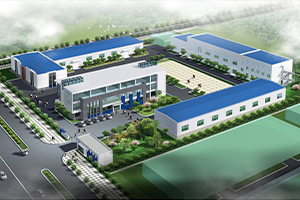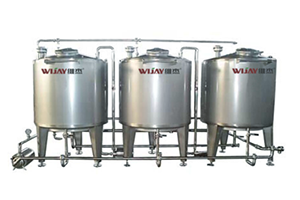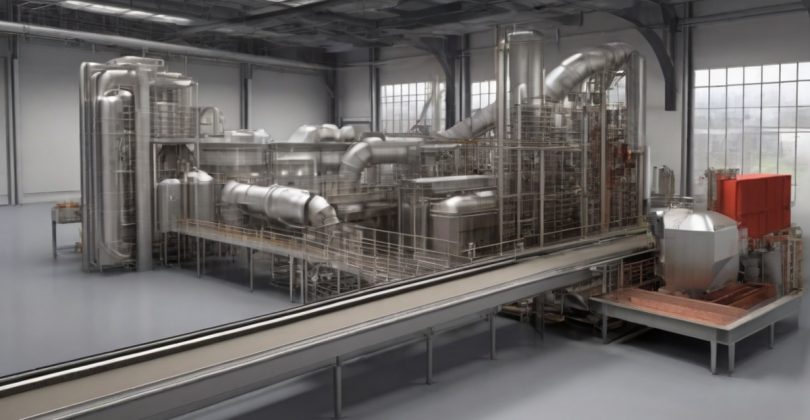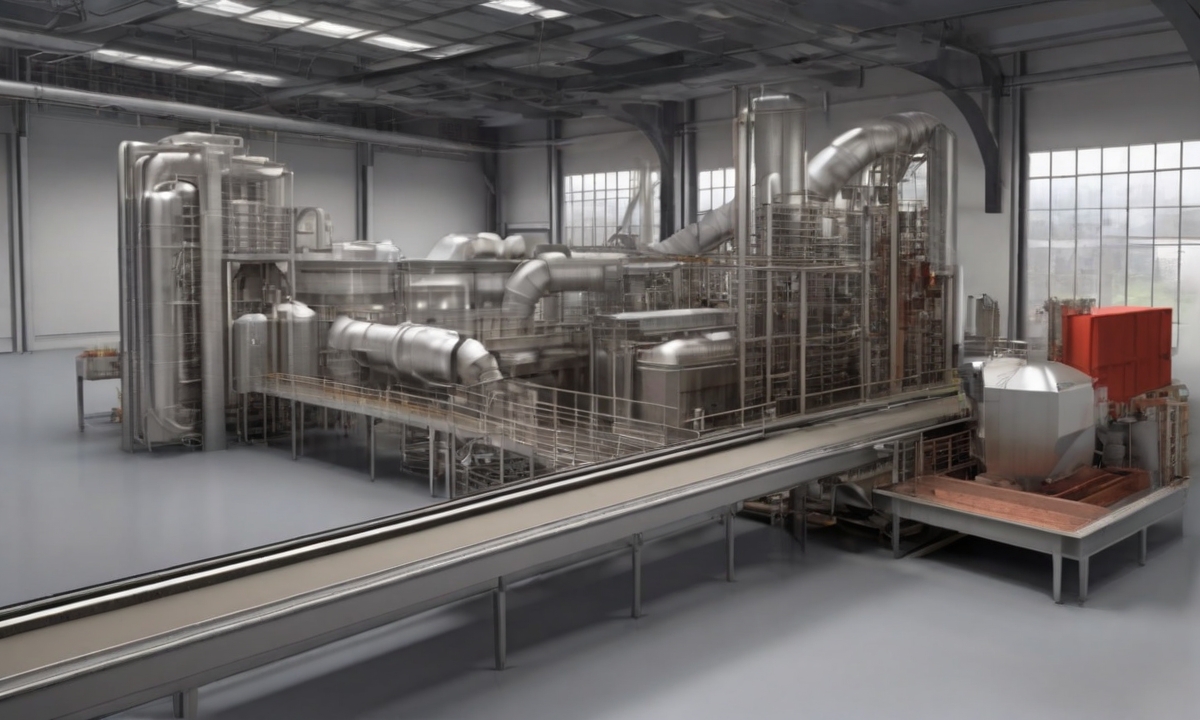Efficient Material Conveying Systems Solutions refers to the strategies, technologies, and methodologies employed to streamline the transportation of materials within various industries. These solutions encompass a wide range of systems designed to optimize efficiency, minimize downtime, reduce costs, and enhance overall productivity. From conveyor belts and pneumatic conveying systems to automated material handling processes, efficient material conveying systems play a critical role in modern manufacturing, logistics, and distribution operations. Today we explore how integrated material handling solutions not only refine workflow but also present vast opportunities for enhancement in various production environments.
Understanding Material Conveying Systems
In an industrial landscape increasingly driven by efficiency and productivity, bulk material handling remains a cornerstone for a broad spectrum of sectors, including mining, pharmaceuticals, and food processing. The use of sophisticated material transfer equipment exemplifies the commitment of these industries to enhancing operational flow and reducing manual labor dependence. Let’s delve deeper into what material conveying systems are, their significance in industry, the varieties available, their key components, and how they function to facilitate this essential process.
Definition and Importance
Material conveying systems encompass the assortment of tools and machinery used to transport bulk materials from one point to another within a processing facility or across industrial operations. These robust Automation Systems are designed to handle large volumes of raw materials, semifinished goods, or finished products, thereby significantly reducing human exertion and minimizing the potential for workplace injuries. Their pivotal role lies in streamlining material transfer, improving throughput, and safeguarding the quality of products during transportation.
Types of Conveying Systems
- Belt Conveyors: Utilizing endless belts that move over pulleys, belt conveyors are versatile and can transport a wide range of materials, from granular to larger items.
- Roller Conveyors: Suited for uniform, firm items, these conveyors facilitate item movement through rows of rollers either by gravity or motor power.
- Pneumatic Conveyors: These systems use air pressure or vacuum to transport materials through pipes, making them ideal for fine or powdery substances.
Each of these conveyor systems offers distinctive benefits tailored to different materials and industry requirements, ensuring optimized processing speeds and minimizing downtime.
Key Components and Functionality
A closer inspection of material conveying systems reveals an intricate arrangement of components that collaborate seamlessly to uphold materials’ transfer. Understanding these parts is crucial for appreciating the complex mechanics behind these efficient systems:
- Conveyor Belts/Rollers: The primary medium through which materials are conveyed, often crafted from durable and resilient materials suitable for a variety of environmental conditions.
- Drive Motors: These provide the necessary power to set the system in motion and maintain the movement of belts or rollers at the desired speed.
- Control Systems: Such systems govern the operation of conveyors, allowing precise control over speed and direction, and are integral for synchronizing multiple conveyor units.
By meticulously coordinating these elements, conveyor systems ensure that bulk material handling processes are carried out with maximum efficiency and minimum interruption.
Advantages of Automated Material Handling
In the drive towards industrial advancement, automated material handling systems have emerged as a cornerstone for developing a lean, efficient, and competitive edge in material transportation and logistics. The transition from manual to automated processes has brought forth substantial improvements in operational efficiency. Here, we explore the various benefits that automation infuses into material transportation technology, which are pivotal in enhancing efficiency in industrial handling.
- Increased Operational Efficiency: Automated systems optimize workflow by delivering consistent and rapid movement of materials, significantly outperforming manual handling rates.
- Reduced Labor Costs: While upfront investments in automation may be substantial, the long-term savings by reducing manual labor can be considerable, allowing re-allocation of human resources to more critical tasks.
- Enhanced Worker Safety: By delegating physically demanding tasks to machines, industries reduce workplace injuries, contributing to a safer and more satisfied workforce.
- Improved Accuracy and Precision: Automated systems minimize human error, ensuring precise material handling which is particularly vital in industries where exact measures are crucial.
- Scalability and Flexibility: Automated material handling systems can be designed to scale with the growth of a business, providing the flexibility to handle varying volumes of materials efficiently.
- Data Collection and Analysis: These systems can be integrated with sensors and software for real-time data analytics, offering insights that drive smarter decision-making.
The utilization of advanced material transportation technology in automated systems doesn’t merely translate to incrementing productivity; it also enhances the overall quality of operations and opens new capacities for industries to innovate and thrive in a market that demands both agility and precision in material handling.
Principles of Bulk Material Handling
Optimizing bulk material handling is fundamental to the excellence of industrial operations. By adhering to key principles, organizations can ensure the efficiency and reliability of their material transfer equipment. This section delves into the esteemed practices that govern the handling, storage, and integration of bulk materials within production environments.
Effective Storage Solutions
The cornerstone of adept bulk material handling lies in robust storage solutions. Establishments frequently rely on silos, bins, and hoppers due to their efficacy in accommodating a wide range of materials. Strategic design choices in these storage apparatuses can significantly impact the overall productivity and safety of industrial material handling operations.
- Consideration of material properties for optimal storage conditions
- Utilization of automation to enhance retrieval and inventory management
- Incorporation of monitoring systems to prevent material degradation
Streamlined Transfer Processes
To sustain a seamless flow of materials, streamlined transfer processes are paramount. Advanced material transfer equipment is designed to handle high-volume throughput with precision and minimal downtime. Methodical planning in the layout and operation of these systems is crucial to mitigate bottlenecks and maintain a steady material supply chain.
- Integration of conveyor systems tailored to material characteristics
- Employing bulk material handling protocols to reduce cross-contamination
- Regular maintenance schedules to sustain system performance
Integration with Production Lines
The embodiment of an integrated material handling system provides a harmonious link between storage and production. The congruence of conveying equipment with production lines ensures an uninterrupted and synchronized flow of materials. Such integration is vital for maintaining the tempo of operations and strengthening the overall output capacity.
- Coordination of control systems for real-time material tracking
- Calibration of material delivery rates to sync with production demands
- Adaptability of systems to facilitate quick response to operational changes
Material Conveying System
When looking to optimize operational efficiency through material handling solutions, selecting the appropriate material conveying system becomes a pivotal decision. It requires careful consideration of various factors that can vastly impact the performance and integration of the conveyor systems within the existing infrastructure.
Selection Criteria for Material Conveying Systems
Choosing the right material conveying system demands a thorough understanding of the specific industry needs and operational capabilities. Key considerations include:
- The nature and characteristics of the materials to be handled, including their weight, abrasiveness, and corrosiveness.
- Desired throughput rates to ensure that the system can manage the expected volume of material within the required timeframes.
- Plant layout and space constraints, which dictate the configuration and flexibility of the conveyor systems.
- The overall compatibility of the system with existing material handling solutions and processes.
Maintaining System Efficiency and Reliability
Maintenance practices are crucial for ensuring that material conveying systems operate at peak efficiency and reliability. Longevity and performance can be significantly enhanced through:
- Regular inspections and proactive servicing to address wear and tear before it escalates into major breakdowns.
- Implementing a predictive maintenance strategy that leverages data analytics to forecast potential issues.
- Training personnel on the correct operation and upkeep procedures to prevent inadvertent damage to the conveyor systems.
Compliance with Safety and Environmental Standards
Adherence to safety and environmental regulations is non-negotiable when it comes to implementing material handling solutions. Companies must:
- Ensure that their material conveying systems are designed and operated in compliance with Occupational Safety and Health Administration (OSHA) standards.
- Follow environmental protection guidelines to minimize the impact of operations on the surrounding ecosystem.
- Incorporate features that safeguard against accidents and injuries, such as guardrails, emergency stops, and warning labels.
Pneumatic Conveying System Essentials
A pneumatic conveying system is vital for bulk material handling in various industrial sectors. This powerful and versatile mode of transport uses air pressure or vacuum to convey materials through a pipeline from one point to another. These systems are particularly praised for their efficiency in moving various granular or powdered materials across different stages of processing, packaging, and distribution.
There are two primary pneumatic conveying system types—pressure and vacuum systems—each with unique applications and advantages. Pressure systems are well-suited for moving materials over longer distances and higher rates, whereas vacuum systems offer more simplicity, safety, and ease of installation, especially useful for shorter distances.
- Pressure Systems: Utilize a pressure differential to push materials through the conveying line, ideal for heavy-duty industrial material handling.
- Vacuum Systems: Employ a vacuum to suction materials through the pipeline, often used for safely transporting hazardous or fragile products.
Pneumatic systems can efficiently handle a vast range of materials, including chemicals, grains, pharmaceuticals, and minerals, ensuring that delicate materials remain intact while hazardous substances are contained safely. The right pneumatic conveying system selection can notably enhance operational productivity, ensure workplace safety, and reduce contamination risk, underscoring its invaluable role in modern industrial material handling.
Innovation in Material Transportation Technology
As industries evolve, there is a continuous push for advancement in the technologies that drive efficiency and productivity. Material transportation technology is at the forefront of this revolution, with automated material handling systems becoming increasingly sophisticated to meet the needs of various industrial applications.
Latest Developments in Conveying Systems
The realm of industrial material handling has witnessed a flurry of innovation aimed at optimizing processes and reducing operational costs. Among these advancements are enhancements to the modularity and flexibility of conveyor systems, allowing for quick adaptation to changing production demands. Moreover, strides in robotics and artificial intelligence have led to smarter, more autonomous systems capable of predictive maintenance and real-time decision-making.
Customizing Solutions for Industry Needs
Understanding that industries have unique requirements, developers of material transport technology are providing more bespoke solutions. Customization ranges from the design of the system to the software that manages it, ensuring that transport technology aligns perfectly with specific material characteristics, site constraints, and handling capacity. This shift to customization has opened up possibilities for industries that were previously constrained by the limitations of standard material handling systems.
Future Trends in Material Handling
Looking ahead, the trends shaping the future of material transportation hint at an even greater dependence on technology. Advancements such as the Internet of Things (IoT) integrated systems and the adoption of Industry 4.0 practices will redefine what is possible, leading to even more efficient and responsive material handling solutions. Emphasis on sustainability is also set to influence future developments, as industries seek greener, more energy-efficient conveying systems to minimize their environmental footprint.
Conveyor Systems Maintenance and Optimization
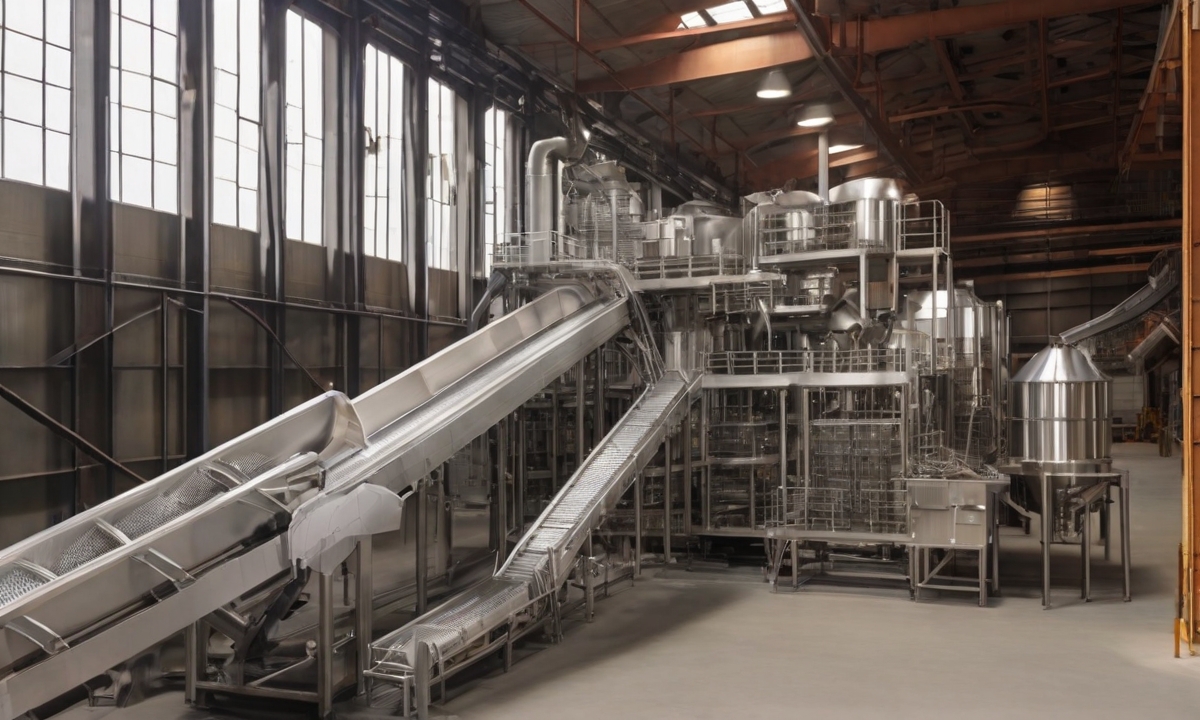
Ensuring the longevity and efficiency of a conveyor system rests on the foundation of proactive maintenance and timely optimization. Adhering to optimal practices in the care of conveyor systems not only prolongs their operational life but also guarantees efficient material conveying solutions and end-to-end material handling solutions.
Regular Inspection and Preventive Maintenance
One of the cornerstones of maintaining a high-functioning conveyor system is establishing a routine of regular inspections. Preventive maintenance involves a series of strategic checks to ensure all components are operating at peak efficiency and to identify potential issues before they become costly problems. This approach is pivotal in minimizing downtime and maintaining continuous, efficient workflows.
- Examination of conveyor belts for wear and tear
- Inspection of motors and drives for signs of overheating
- Regular lubrication of moving parts to prevent friction and wear
- Checking for accurate alignment to preclude material spillage
Troubleshooting Common Conveyor System Issues
Even with relentless maintenance, some conveyor system issues are inevitable. Recognizing common problems and their solutions can aid in swiftly restoring functionality, ensuring minimal disruption to material handling operations.
- Conveyor belt misalignment or slippage
- Material blockages causing workflow obstructions
- Motor malfunctions or failures
- Issues with conveyor rollers such as seizing or wear
Upgrades for Enhanced Performance
Advancement in technology affords numerous opportunities to enhance conveyor system performance. Introducing upgrades to existing systems can lead to better efficiency, advanced material handling solutions, and greater overall productivity. This can include but is not limited to the incorporation of more sophisticated control systems, utilization of higher quality materials for increased durability, and the introduction of energy-efficient motors.
- Integration of smart sensors to monitor system performance
- Replacement of components with high-performance alternatives
- Software updates for improved system controls and monitoring
Case Studies: Material Handling Solutions in Action
In the fast-paced industrial sector, material handling solutions are pivotal for streamlined operations. This section examines real-world applications where material conveying systems and automated material handling technologies have significantly improved productivity and efficiency.
- Food Processing Facility Upgrade: A large food manufacturer was struggling with a sluggish and outdated conveyor system that affected packaging turnaround. By implementing a sophisticated, automated material handling system, they reduced bottlenecks and increased throughput by 25%.
- E-commerce Giant’s Distribution Network: To manage the demand spike during peak seasons, an e-commerce powerhouse integrated a high-speed sorting and material conveying system. This led to a 40% improvement in order processing time and greater customer satisfaction.
- Automotive Parts Sorting Efficiency: An automotive supplier faced challenges with parts sorting accuracy. Incorporating an AI-driven automated material handling system, the accuracy levels soared, reducing manual rechecks and increasing the overall quality of delivery.
- Pharmaceutical Warehousing Solution: With safety and precision as top priorities, a pharmaceutical company adopted an advanced conveyor system tailored for sensitive materials. This resulted in minimizing contamination risks and optimizing the climate control logistics.
These case studies demonstrate the flexibility and impact of modern material handling solutions. By choosing the right material conveying system, companies across various industries are experiencing breakthroughs in their operational capabilities.
Conclusion
As we’ve navigated through the intricate world of material conveying systems, the importance of such infrastructure in modern industrial material handling can’t be overstated. The accumulation of insights throughout this discourse underscores that the implementation of these systems is more than a mere operational upgrade; it is a foundational element for achieving efficiency in today’s fiercely competitive market. Efficient material handling, facilitated by advanced conveying systems, plays a pivotal role in the safety, speed, and reliability of product transfer across numerous industries.
Summary of Material Conveying Systems Benefits
In summarizing the benefits of material conveying systems, we find that these solutions offer a substantial enhancement to operational efficiency and workflow continuity. From reducing physical labor and associated costs to minimizing material wastage and optimizing time management, the contributions of an effective system are comprehensive. These systems are the linchpins of industrial material handling that consistently support production resilience and scalability.
Choosing the Right Partner for Material Handling Needs
The quest for an exceptional material conveying system necessitates a partnership with entities that provide not only the hardware but the expertise and support necessary for a seamless mesh with an organization’s unique workflow. The right partner will have a proven track record in configuring, implementing, and maintaining systems that align with industry-specific requirements and compliance standards, thereby ensuring a refined end-to-end material handling protocol.
Investment in Efficient Conveying Systems as a Strategic Decision
Ultimately, investing in a state-of-the-art material conveying system is a strategic decision that signifies foresight and long-term commitment to quality, productivity, and growth. These systems are an integral part of the blueprint for sustained industrial success, where each innovation and improvement resonates with increased output and prosperity. For industry leaders intent on not just surviving but thriving, the integration of sophisticated material handling solutions is an unequivocal step towards securing a formidable market position in an era where efficiency dictates dominance.
FAQ
What are material conveying systems and why are they important?
Material conveying systems are sophisticated setups that facilitate the transport of bulk materials from one location to another within industrial settings. They are crucial as they enhance efficiency, improve workplace safety, minimize labor costs, and optimize the material flow process.
What are the different types of material conveying systems available?
There are several types of material conveying systems, including belt conveyors, roller conveyors, pneumatic conveying systems, and more, each designed for specific material handling requirements and industrial applications.
Can you explain the key components of a conveyor system and their functionalities?
Conveyor systems typically consist of belts, motors, rollers, and control systems. Belts transport materials, motors provide the necessary power, rollers support the belt and the materials on it, and control systems manage the flow and speed of the conveyor.
What are the advantages of using automated material handling systems over manual processes?
Automated material handling systems offer improved efficiency, better use of space, reduced labor costs, enhanced worker safety, reduced risk of injury, and improved accuracy in material transportation and handling.
What are some effective storage solutions in bulk material handling?
Effective storage solutions for bulk materials include silos, hoppers, and bins, which are designed to hold large quantities of material in a way that conserves space and facilitates easy access for transport.
How do you ensure streamlined transfer processes in material handling?
Streamlined transfer processes can be achieved through the careful design and integration of conveyor systems, ensuring a seamless material flow, reducing bottlenecks, and properly aligning with the production line operations.
What should be considered when selecting a material conveying system for industrial use?
Factors to consider when selecting a material conveying system include the type and characteristics of materials to be handled, required throughput, spatial constraints, the layout of the existing production facility, and cost considerations.
How do you maintain the efficiency and reliability of a material conveying system?
To maintain efficiency and reliability, it’s important to adhere to regular inspection schedules, perform preventive maintenance, promptly address any repairs needed, and ensure that operations adhere to best practices and safety standards.
What are the environmental and safety standards to keep in mind with material handling systems?
Material handling systems should comply with OSHA guidelines for safety, as well as environmental regulations that may govern emissions, noise, dust, and waste management associated with the operation of these systems.
How do pneumatic conveying systems work in industrial material handling?
Pneumatic conveying systems use air pressure or vacuum to transport bulk materials through a network of pipes. They are effective in moving powders, granules, and other small-particle materials and are used in various industries for their efficiency and cleanliness.
What are the recent developments in material transportation technology?
Recent developments include increased automation, the integration of smart sensors and IoT for real-time tracking and monitoring, improved energy efficiency, and the creation of flexible systems that can adapt to various materials and processes.
Can you customize material conveying system solutions to fit specific industry needs?
Yes, material conveying systems can be tailored to meet the unique demands of different industries, taking into account the specific materials handled, the operational environment, and desired outcomes for efficiency and productivity.
What are the future trends in material handling?
Future trends in material handling may include greater automation, the use of artificial intelligence for predictive maintenance and system optimization, sustainable and green technologies, and advanced robotics for complex tasks.
What does conveyor system maintenance and optimization involve?
Conveyor system maintenance and optimization involve carrying out regular inspections, conducting preventative maintenance, and troubleshooting common issues. It may also involve upgrades to enhance system performance and accommodate changing operational demands.
How are material handling solutions applied in different industries?
Each industry will have specific case studies that demonstrate how material handling solutions are applied. For instance, in mining, heavy-duty conveyors are used to move ore, while in e-commerce, an automated sorting system help in order processing.
Why is choosing the right partner for material handling needs important?
Selecting a knowledgeable and experienced partner in material handling ensures the successful integration and operation of material conveying systems. A good partner provides expertise, reliable equipment, and supportive services, leading to long-term operational benefits.
Why should a business invest in efficient conveying systems?
Investing in efficient conveying systems can be a strategic decision that yields numerous benefits, including increased productivity, cost reductions, enhanced safety, and a stronger competitive edge in the market.
